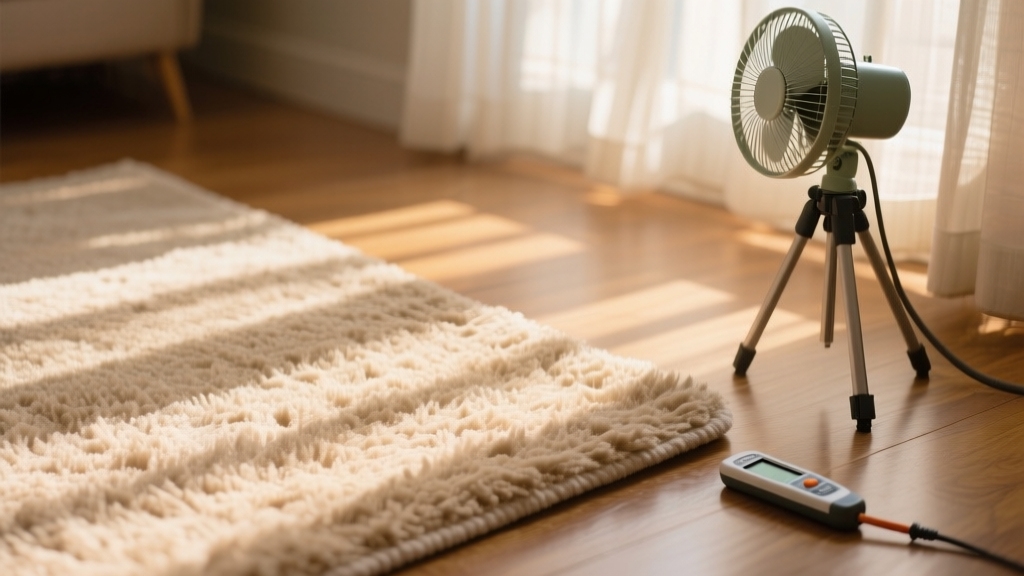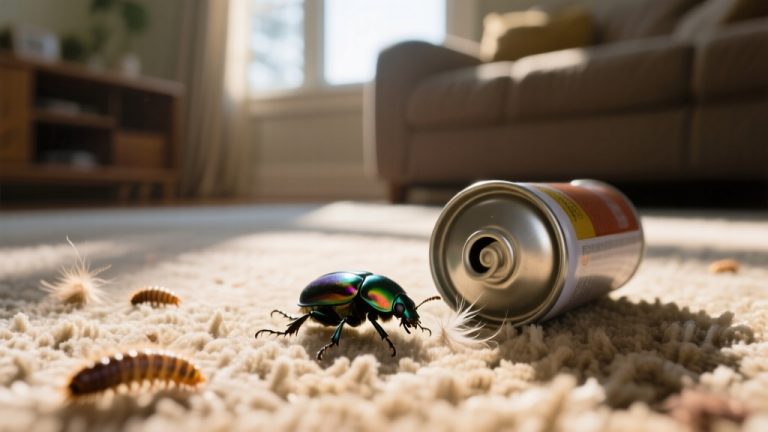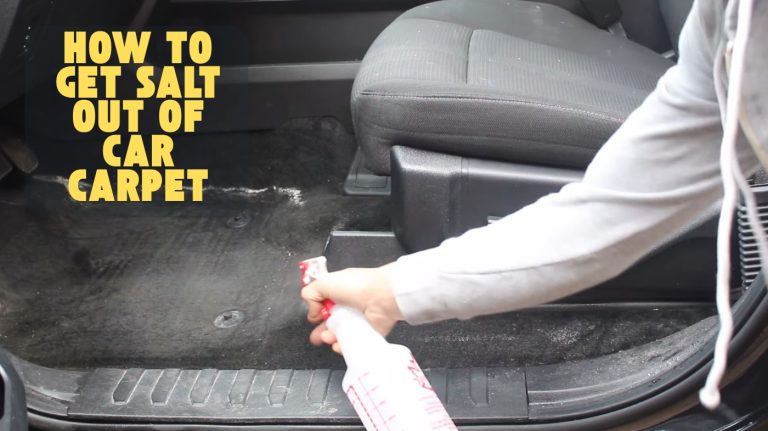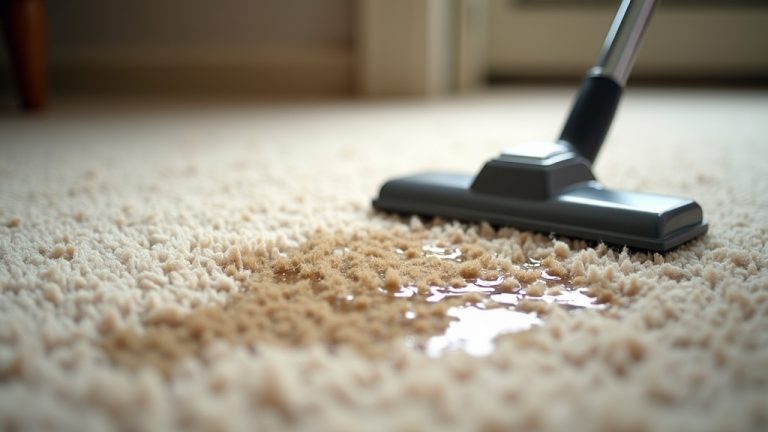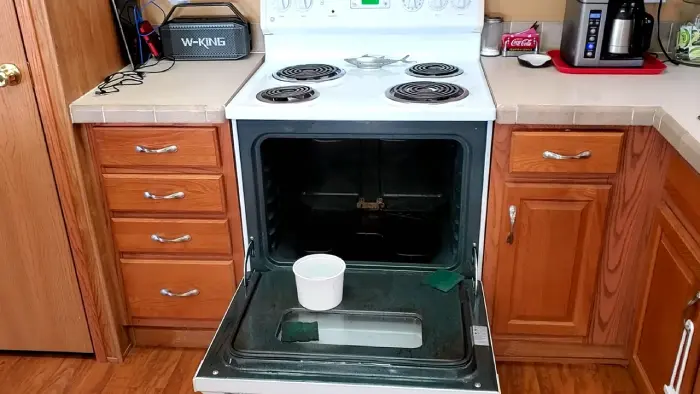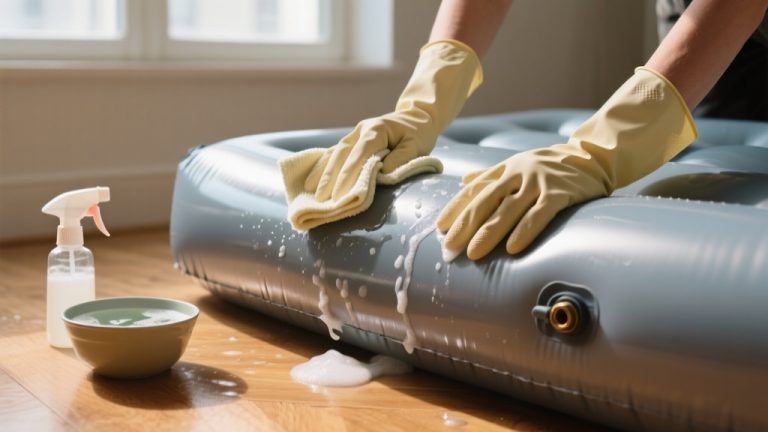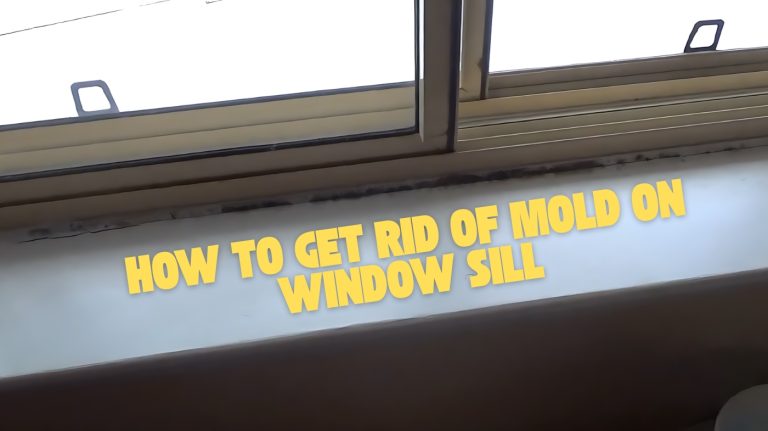How to Dry a Carpet? Expert Tips for Quick Results
To dry a carpet effectively, start by evaluating moisture with a meter and removing excess water using a wet vacuum or extractor. Clear the area and boost airflow with strategically placed fans and air movers, guaranteeing cross-ventilation.
Use dehumidifiers to lower humidity below 50% and maintain warm temperatures for faster evaporation. Avoid walking on wet carpet to protect fibers. Monitor moisture regularly to prevent mold.
By managing these factors properly, you’ll guarantee efficient drying and carpet preservation. Plus, discover advanced techniques for ideal results.
Key Takeaways
- Remove furniture and items to fully expose carpet, allowing better airflow and preventing moisture trapping.
- Use high-powered vacuum extractors and rotary brushes to remove as much moisture as possible before drying.
- Position axial or centrifugal fans and dehumidifiers strategically to maximize airflow and humidity control for faster drying.
- Create cross-ventilation by opening windows and doors, using fans to circulate air and expel humid indoor air.
- Monitor moisture levels regularly with moisture meters to track drying progress and prevent mold growth.
Assessing Carpet Moisture Levels
How do you accurately determine moisture levels in carpets before drying or installation?
Start by using pinless, dual-depth moisture meters like the Moisture Encounter ME5 to get comparative values between the carpet and underlying floors.
Begin with pinless, dual-depth meters like the Moisture Encounter ME5 for comparative carpet and floor readings.
For more direct readings, insert pin-type moisture meters into the carpet backing or tack strip.
In carpet-over-concrete scenarios, use relative humidity (RH) probes within the slab at 40%-80% depth, following ASTM F2170 standards, to assess substrate moisture accurately.
Thermal imaging cameras can help spot hidden damp spots by detecting temperature variations.
Conduct multiple measurements across various spots to identify moisture distribution and compare results against manufacturer guidelines.
Document all readings with notes and photos for remediation planning.
Avoid relying solely on surface tests or DIY kits, as these lack the precision needed for reliable moisture assessment. Proper moisture control is essential to prevent long-term damage such as mold growth or material degradation. Regular moisture mapping helps locate hidden moisture sources and track drying progress effectively.
Preparing the Area for Drying
First things first, let’s clear out the space. Go ahead and remove all the furniture and items from the carpeted area. This will help you fully expose the surface and make sure there are no moisture traps lingering around.
Now, let’s talk about ventilation. It’s super important to get some fresh air flowing in! Open those windows and doors wide, and if you have fans, put them to work to really promote airflow. Running a furnace fan can also help by circulating air continuously to speed up drying. Proper ventilation is essential to prevent mold growth and maintain surface integrity.
Lastly, don’t forget to protect the surrounding surfaces. Grab some covers for the baseboards and adjacent flooring. You definitely want to avoid any water damage while the drying process is underway.
Clear Furniture and Items
Before drying your carpet, you’ll need to clear the area by removing all movable furniture and items that could obstruct airflow or suffer water damage.
Prioritize wooden, metal, and upholstered furniture vulnerable to moisture and mold. Use dollies or sliders to protect carpet fibers during removal. Remember that porous materials exposed to Category 3 water are likely to be discarded due to health risks. Ensuring proper airflow around the carpet helps prevent mold growth during the drying process.
For immovable items, cover them with plastic sheets and elevate small objects to prevent dampness. Remove floor mats, pet accessories, and loose items from the carpeted zone.
| Task | Action | Purpose |
|---|---|---|
| Furniture Removal | Use dollies, inspect legs for dampness | Prevent damage and moisture spread |
| Cover & Elevate Items | Plastic sheets, risers | Protect immovable items |
| Clear Floor Accessories | Remove mats, pet beds, cords | Maximize exposed carpet surface |
This ensures ideal drying conditions and reduces mold risks.
Ensure Proper Ventilation
Once you’ve cleared the carpeted area of furniture and items, focus on establishing proper ventilation to accelerate drying. Open windows on opposite sides to create cross-ventilation, allowing moist air to exit and fresh air to enter. Remember to avoid opening windows during humid or rainy weather to prevent additional moisture ingress.
Keep doors open, especially those leading outside, if weather permits. Position axial fans 12 to 15 feet apart, angled toward baseboards, to enhance airflow along lower walls. Rotate air movers every 1-2 hours to ensure even carpet drying. Using ergonomic handles on fans and air movers can reduce fatigue if you need to adjust them frequently.
Use centrifugal fans for the dampest spots, supplemented by axial fans for broad circulation. Avoid airflow obstruction by placing air movers at least six inches from walls or furniture. Maintain open airflow paths to prevent mold growth caused by trapped moisture.
Combine fans with dehumidifiers or air conditioning for ideal moisture removal and faster drying. Using a relative humidity meter to monitor indoor humidity and aiming for levels below 50% humidity helps prevent prolonged drying and mold growth.
Protect Surrounding Surfaces
Although drying the carpet is essential, safeguarding the surrounding surfaces is equally important to prevent water damage and ensure effective drying.
Protect furniture, flooring, walls, and equipment areas to maintain structural integrity and avoid costly repairs. Here’s how you can do it effectively:
- Place plastic sheeting or furniture coasters under furniture legs, or remove furniture to avoid moisture absorption and rust stains.
- Seal baseboards and wall edges with painter’s tape and plastic to prevent moisture migration behind walls.
- Cover adjacent flooring with waterproof barriers to guard against overspill during drying.
- Protect floors under drying equipment with mats or cardboard and secure cords to prevent damage and hazards. Using equipment in well-ventilated areas helps reduce the risk of chemical buildup and promotes faster drying.
Additionally, promptly addressing water exposure is crucial because prevent mold growth and minimize damage to both the carpet and surrounding areas.
Removing Excess Water From the Carpet Surface
Alright, let’s tackle that excess water on your carpet! First things first, grab some heavy-duty extraction equipment. You’ll want to choose your machines based on just how soaked your carpet is. Those industrial-grade machines with powerful suction?
They’re your best friends here, as they can pull moisture right out of the fibers. Before starting, be sure to capture photos of existing damages to document the situation for insurance and comparison purposes.
Once you’ve made a good dent in the water removal, it’s time to boost air circulation. Bring in some fans or open up those windows for good ventilation. This will really help speed up the drying process and get rid of that residual dampness. Proper ventilation and airflow are crucial to preventing mold growth and further damage.
Initial Water Extraction
How do you effectively remove excess water from a carpet surface to accelerate drying? Start with high-powered vacuum extraction using carpet extractors or portable wet vacuums, calibrated to balance suction pressure and water injection volume.
Use heated water (150-200°F) to emulsify soils and loosen moisture. Agitate fibers with rotary brushes before extraction to release trapped water. Perform multiple slow, overlapping passes with the extraction wand to ensure thorough removal. This process ensures dirt removal rather than just redistribution.
- Pre-condition carpet with soil-release agents for better water loosening.
- Apply heated water extraction to break down oils and improve suction efficiency. Proper maintenance and moisture control in surrounding environments help prevent mildew growth during drying.
- Avoid overwetting by controlling pressure and water volume precisely.
- Continue extraction until no visible moisture remains on the surface.
This method optimizes moisture removal, reduces drying time, and prevents damage.
Surface Air Circulation
Once you’ve extracted as much water as possible from the carpet surface, the next step is to focus on enhancing air circulation to remove residual moisture.
Position axial fans 12 to 15 feet apart, angled at baseboards to target carpet edges, or place centrifugal fans in small rooms. Regularly clean fan blades and inspect cords before use to ensure optimal operation. Using fans with low-foaming carpet cleaners can help prevent residue buildup during drying.
Use oscillating fans for continuous airflow over the carpet, and face air movers directly at wet spots or underneath loose carpet.
Open windows and doors to create cross-ventilation, expelling humid air to prevent moisture buildup.
For large areas, deploy one commercial-grade air mover per 300 square feet, running them continuously until dry.
Combine fans with a dehumidifier to lower indoor humidity to 30%, accelerating evaporation and reducing mold risk.
Maintain indoor temperatures around 70-75°F to optimize drying speed.
Utilizing Air Movers and Fans Effectively
Although selecting the right air mover is essential, you’ll also need to position and operate these devices effectively to maximize carpet drying. Proper use enhances airflow contact and speeds evaporation. Follow these key steps:
- Position air movers at a 45-degree angle toward wet areas. Maintain at least six inches from walls to ensure unrestricted airflow. This placement strategy helps to enhance air circulation and reduce drying time.
- Space multiple units evenly and rotate them every 1-2 hours. This prevents damp spots and promotes uniform drying. Using airflow techniques similar to those in cleaning processes can improve moisture removal efficiency.
- Combine centrifugal or downdraft air movers with axial fans for ventilation. Use open windows or doors to exhaust moist air.
- Avoid pointing air movers upward. Airflow should sweep carpet surfaces to expedite drying efficiently.
Applying these practices ensures ideal moisture removal while preventing mold and odors effectively.
Employing Dehumidifiers to Enhance Drying
When you incorporate dehumidifiers into your carpet drying process, you accelerate moisture removal by extracting excess humidity from the air.
This prevents moisture from settling back into the carpet and reduces drying time considerably. Dehumidifiers work best in sealed areas, running continuously alongside air movers to maintain low humidity and inhibit mold growth, especially beneath carpet padding.
| Feature | Benefit | Best Use Case |
|---|---|---|
| Refrigeration Tech | Efficient moisture extraction | Basements, crawl spaces |
| Automatic Controls | Optimizes humidity & temp | Prolonged drying |
| Portable Design | Focused drying in affected areas | Flood-damaged rooms |
Use dehumidifiers after initial surface drying to ensure thorough moisture removal and prevent secondary damage like mildew or odors. Regular maintenance and preventing mold growth are critical to ensure the effectiveness of drying equipment and avoid contamination risks.
Techniques for Deep Moisture Extraction
Hey there! Did you know that using compressed air can really help with drying out your carpets? By blowing air into the fibers and padding, you can push out any trapped moisture that might be lurking deep down.
This method speeds up the drying process because it boosts airflow under the carpet, reaching spots that regular extraction techniques might miss.
Now, let’s talk about carpet padding. It’s super important to make sure that dries out too. If moisture gets stuck there, it can lead to mold growth and even structural damage to your floors. Proper air flow and equipment are essential to avoid drying issues and ensure optimal results during the drying process proper air flow.
Compressed Air Blowing
Since moisture can penetrate deep into carpet fibers and padding, using compressed air blowing techniques becomes essential for thorough drying.
Compressed air dislodges trapped moisture, speeding up the drying process effectively. To optimize drying, combine compressed air with strategic airflow and dehumidification.
Follow these steps for best results:
- Use specialized tools like a Tornador or compressed air nozzles to reach deep fibers and tight spaces.
- Position axial or centrifugal fans strategically around the room to enhance airflow and prevent moisture settling. It is important to place units diagonally in corners and along the longest walls spaced 8–10 ft apart for maximum efficiency strategic air mover placement.
- Create cross-flow airflow by alternating air direction and opening windows to promote even drying.
- Continuously operate dehumidifiers alongside air movers to extract moisture from the air and prevent mold growth.
This method ensures efficient, deep moisture extraction without compromising safety or energy use.
Carpet Padding Drying
After using compressed air blowing to extract moisture from carpet fibers, attention must shift to the carpet padding beneath.
Use a wet/dry vacuum to remove as much water as possible since padding retains moisture longer.
Carefully lift the carpet, using pliers to remove staples if necessary, to expose padding for thorough drying.
Assess moisture levels; replace heavily saturated or contaminated padding to prevent mold. Damage to padding affects the overall comfort and insulation of the carpet.
Position high-powered fans and air movers toward the exposed padding, adjusting angles for targeted airflow.
Combine with portable heaters to raise temperature, accelerating evaporation.
Deploy multiple dehumidifiers to extract ambient moisture, emptying reservoirs regularly.
Maintain continuous operation of fans, heaters, and dehumidifiers until the padding is fully dry.
This integrated approach ensures deep moisture extraction, preventing mold and preserving carpet integrity.
Using HVAC Systems to Support Carpet Drying
Although drying carpets can be challenging, using your HVAC system effectively can substantially accelerate the process.
Your HVAC system promotes moisture evaporation by maintaining consistent airflow and controlling temperature and humidity levels. Here’s how to optimize it:
- Run the HVAC fan continuously to circulate air, preventing stagnant moisture pockets.
- Use the air conditioning to reduce indoor humidity, enhancing moisture extraction from carpet fibers.
- Adjust heating settings to maintain a moderate temperature (70-75°F), increasing air’s moisture-holding capacity.
- Position vents to direct airflow over damp carpets and keep interior doors open to allow free air movement. This method requires an existing HVAC setup and its effectiveness can vary depending on weather conditions.
Best Practices to Protect Carpet Fibers During Drying
When drying your carpet, protecting its fibers from physical stress is essential to maintain texture and longevity. Avoid walking on damp carpet to prevent fiber crushing and soil embedding; if necessary, wear clean socks or shoes.
Never drag furniture across wet areas, as this distorts fibers. Use absorbent towels with gentle, even pressure to blot moisture rather than scrubbing. Using absorbent towels can soak up excess water and significantly reduce drying time.
Ensure the drying environment is well-ventilated with moderate temperatures to prevent heat damage and fiber weakening. Employ air movers and dehumidifiers to accelerate drying without mechanical agitation.
Avoid direct sunlight exposure to prevent discoloration and brittleness. Elevate rugs or lift carpets on drying racks to improve airflow and reduce matting.
Finally, maintain low ambient humidity and promptly address moisture spots to inhibit mold growth and fiber deterioration during drying.
Monitoring Drying Progress With Moisture Meters
Because accurate moisture measurement is essential for effective carpet drying, using moisture meters allows you to track drying progress quantitatively and detect hidden moisture beneath the surface.
Accurate moisture measurement is crucial for tracking carpet drying and uncovering hidden dampness beneath surfaces.
You can use pin-type meters, which measure electrical resistance via needles, or pinless meters that scan moisture non-invasively beneath finished carpets. Specialized carpet meters provide precise readings for carpets and padding.
To monitor effectively, follow these steps:
- Establish a dry baseline by measuring unaffected areas before drying starts.
- Take regular moisture readings to assess drying progress against target moisture levels (typically 1–3%). Maintaining moisture below 1% on dye lines is critical to control color variation and ensure product quality. moisture below 1%
- Use moisture mapping to identify damp spots and ensure uniform drying.
- Document data consistently to detect moisture re-entry or slow-drying zones, enabling targeted intervention and preventing damage.
Managing Environmental Factors to Speed Up Drying
To speed up carpet drying, you must carefully manage key environmental factors such as humidity, temperature, and airflow. Lower indoor humidity levels accelerate evaporation, so use dehumidifiers to extract moisture effectively. Keeping humidity low is especially important in Perth’s climate, where naturally high humidity can significantly slow drying times (humidity impact).
Maintain a warm room temperature with HVAC systems to increase water molecule activity, promoting faster moisture release from fibers. Guarantee consistent temperature to prevent condensation that slows drying.
Enhance airflow by strategically placing fans around carpet edges to remove evaporated moisture and prevent reabsorption. Open windows or use ventilation systems to exchange humid indoor air with drier outside air.
Frequently Asked Questions
Can Drying Carpets in Direct Sunlight Cause Fiber Damage?
Yes, drying carpets in direct sunlight can cause fiber damage. UV rays break down dyes, leading to color fading and yellowing, especially in light-colored carpets.
Heat softens and dries out fibers, accelerating breakdown and causing brittleness.
Prolonged sun exposure also weakens adhesives and backing, resulting in wrinkles and distortion.
To protect your carpet, avoid direct sun drying; instead, use indirect airflow and UV-blocking treatments to maintain fiber integrity and color.
Is It Safe to Use Household Fans Instead of Professional Air Movers?
You might think a household fan will do the trick, but it’s like using a candle to light a stadium.
Household fans lack the high-velocity, concentrated airflow of professional air movers, which dry carpets faster and prevent mold.
They’re not built for wet environments and may fail or prolong drying, risking damage.
For effective, safe drying, especially after water damage, rely on professional air movers instead.
How Often Should Microfiber Sheets Be Replaced During Layered Drying?
You should replace microfiber sheets after each full absorption cycle or as soon as they become saturated.
This guarantees maximum moisture removal and prevents reintroducing dampness to the carpet.
Factors like fiber type, soil level, and ambient humidity influence replacement frequency.
For thick or heavily soaked carpets, expect multiple sheet changes.
Always use clean, dry sheets to maintain drying efficiency and prolong microfiber lifespan.
Can Carpet Drying Methods Differ for Synthetic Versus Natural Fibers?
Yes, carpet drying methods do differ for synthetic and natural fibers.
You’ll use higher heat and faster drying techniques on synthetic fibers since they resist damage and dry quickly.
For natural fibers, you must employ low heat or ambient drying to prevent shrinkage and fiber distortion, extending drying times.
Careful moisture control and gentle cleaning agents are essential with natural fibers to avoid damage and mildew growth during drying.
What Precautions Are Needed When Drying Carpets on Wooden Floors?
When drying carpets on wooden floors, you should minimize foot traffic to prevent moisture penetration into the wood.
Remove all furniture to guarantee airflow and avoid trapping moisture.
Don’t use abrasive tools or harsh chemicals that can damage the wood finish.
Control drying speed carefully; too fast can cause warping or cracking.
Regularly vacuum with a soft brush nozzle to reduce abrasive soil buildup, preserving both carpet and wooden flooring integrity over time.
Ready for Results? Apply These Carpet Drying Tips Today
Drying your carpet isn’t just a chore; it’s a race against a flood of potential damage!
By evaluating moisture levels, removing excess water, and deploying air movers, dehumidifiers, and HVAC systems precisely, you’ll transform a soggy mess into a dry, pristine surface faster than you thought possible.
Monitor progress with moisture meters and control environmental factors meticulously.
Follow these expert steps, and you’ll protect your carpet fibers like a professional restoring a masterpiece under an unforgiving deadline!

